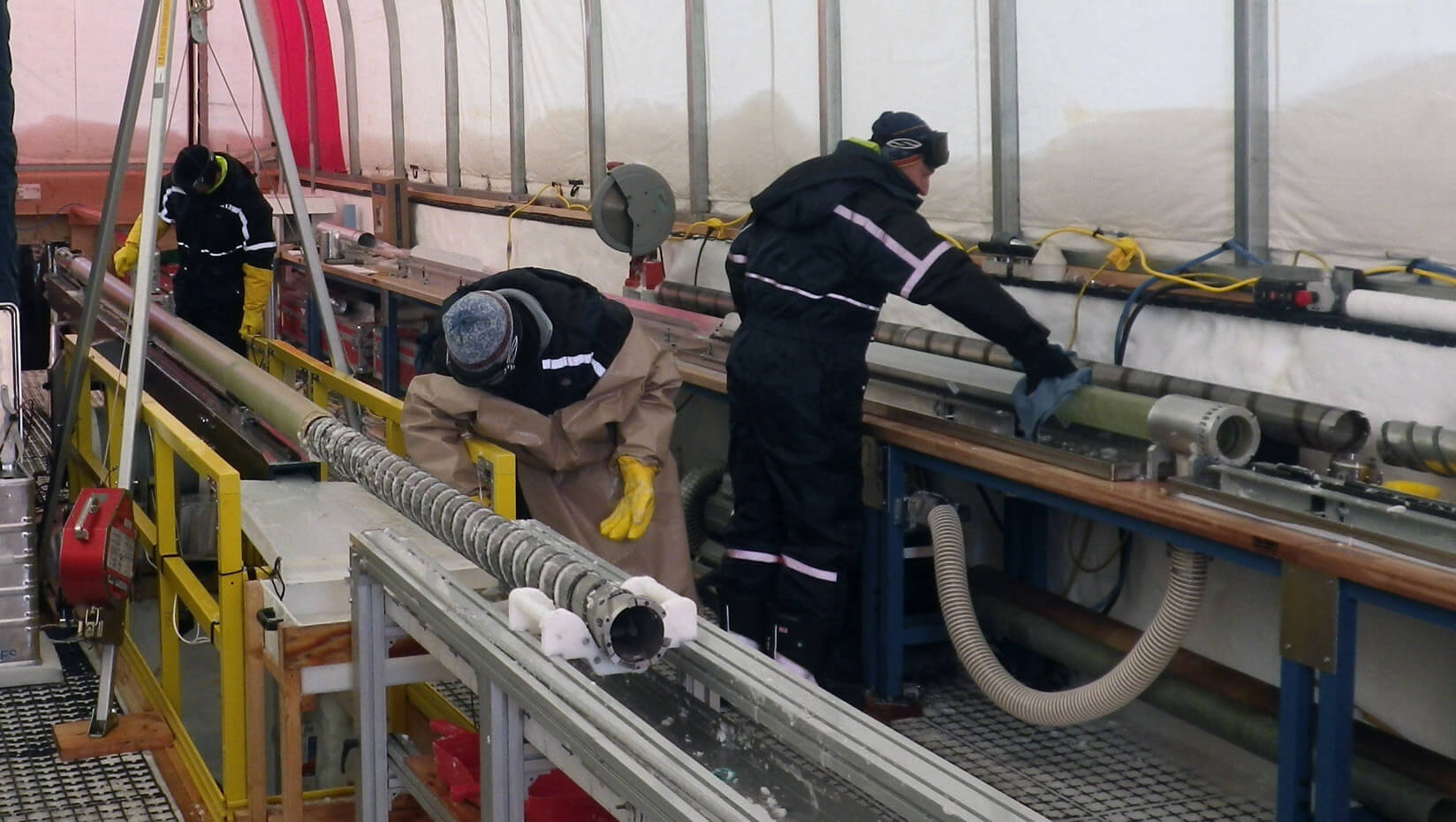
Winski: 54,000-year-old South Pole ice core will reveal past wind patterns, climate
Dominic Winski helped secure the deepest and oldest ice core at the South Pole in order to understand past variations in the Earth’s climate.
The oldest ice in the 5,745-foot-long (more than a mile deep) core is 54,302 years old, plus or minus 519 years, says the research assistant professor at the University of Maine Climate Change Institute.
Over two field seasons (2014–15 and 2015–16), Winski and a team that included researchers at 17 other institutions took part in the project called SPICEcore (South Pole Ice) core.
The goal, says Winski, is to get a detailed archive of climate conditions in East Antarctica during the last 54,000 years, including changes in atmospheric chemistry, climate and biogeochemistry.
“Studying how climate has changed in the past is incredibly important. Through projects like SPICEcore, we are able to learn more about how the climate system works,” he says.
“This knowledge helps us understand the changes occurring today, which has real consequences for many people around the world.”
Through analysis, the team identified 251 volcanic eruptions (that also are found in other ice cores), which resulted in one of the most precisely dated interior East Antarctic records.
The team now is interpreting past changes in salt and dust in the core.
“These measurements will tell us how oceans, wind patterns and Antarctic climate changed in the past,” says Winski, who grew up in Trescott, Maine.
To understand information contained within an ice core, Winski says it’s important to know the age of the ice at every specific depth.
On average, he says 7.4 centimeters of snow falls annually at the South Pole.
“UMaine researchers are playing a vital role in the largest U.S. ice core project that is currently running,” says Winski, who earned his bachelor’s and doctorate at Dartmouth College and his master’s at UMaine.
“The results of this paper will provide a framework for exciting future research using the South Pole ice core.”
Karl Kreutz, a professor in the UMaine School of Earth and Climate Sciences and the CCI, also is part of the team.
In addition to Kreutz, researchers from the University of Washington; Dartmouth College; Northern Arizona University; South Dakota State University; Butte College; Oregon State University; University of California, San Diego; Pennsylvania State University; University of Colorado; University of California, Irvine; NASA Goddard Space Flight Center; U.S. Geological Survey; New Mexico Institute of Mining and Technology; University of California, Berkeley; University of New Hampshire; University of Bern; and the Desert Research Institute took part.
“The SP19 chronology for the South Pole Ice Core — Part I: volcanic matching and annual layer counting” is the title of the open-access paper in Climate of the Past, an interactive open-access journal of the European Geosciences Union. The National Science Foundation, Office of Polar Programs, supported the research.
Contact: Beth Staples, 207.581.3777, beth.staples@maine.edu

